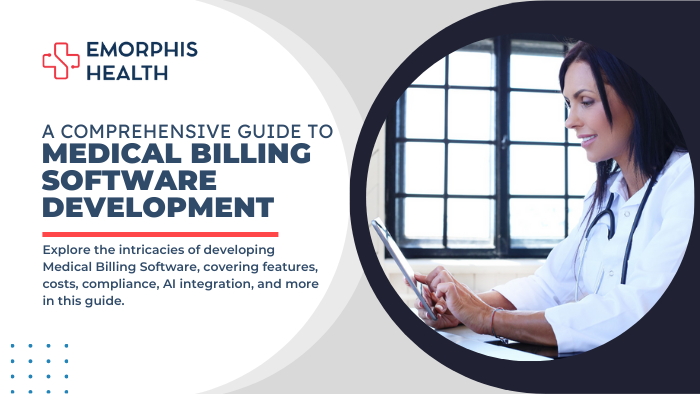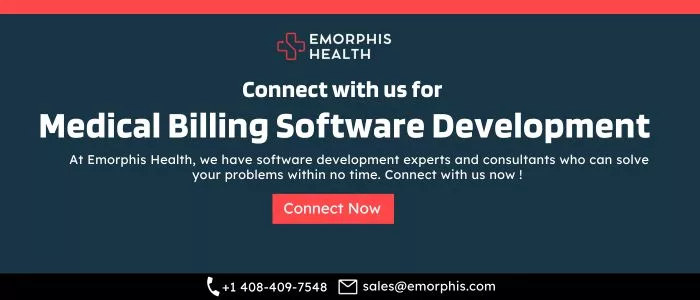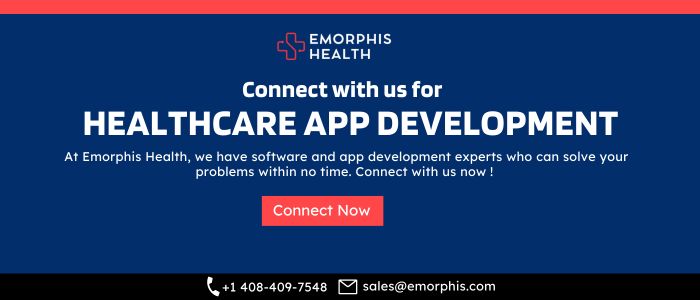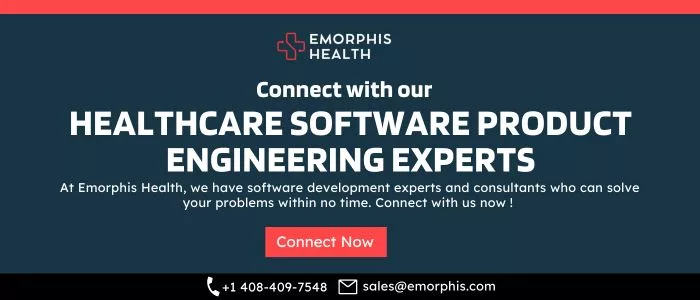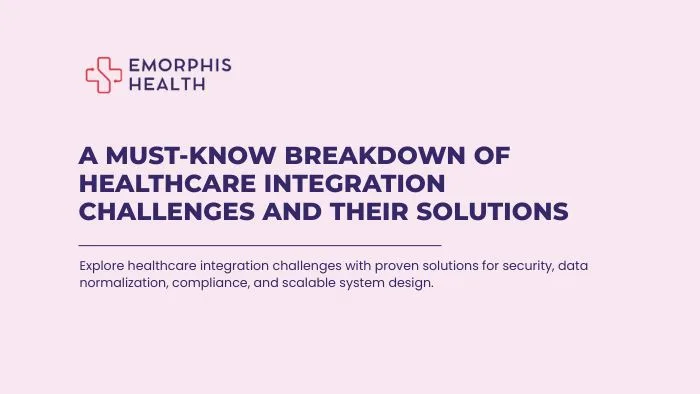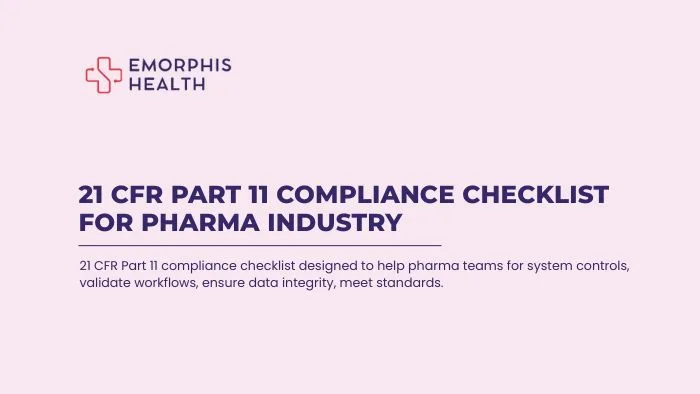Understanding Medical Billing and the Role of Medical Billing Software Development
See Contents
- 1 Understanding Medical Billing and the Role of Medical Billing Software Development
- 2 Overcoming Common Challenges in Medical Billing with Technology
- 3 Key Features of Medical Billing Software
- 4 The Importance and Benefits of Medical Billing Software Development in Healthcare Management
- 5 Understanding ICD-10 and CPT Code Integration in Medical Billing Software
- 6 Custom Medical Billing Software Development
- 7 How Much Does Medical Billing Software Development Typically Cost?
- 8 The Role of Artificial Intelligence (AI) in Modern Medical Billing Software Development
- 9 Ensuring Compliance and Security
- 10 The Future of Medical Billing
- 11 Conclusion
- 12 Top 10 Frequently Asked Questions About Medical Billing Software Development
Medical billing plays a pivotal role in the healthcare industry, serving as the bridge between healthcare providers and insurance companies. In fact, it is the process of translating medical services into billing claims, ensuring healthcare professionals get paid for their services. This critical administrative task involves documenting patient information, treatment codes, and the associated costs. However, as a matter of fact, the process can be quite complex and prone to errors if done manually. This is where medical billing software development comes into play.
Moreover, medical billing software is a technological boon to healthcare providers and medical facilities, streamlining the entire billing process. These software solutions not only simplify the billing process but also enhance accuracy, reducing the risk of costly errors. With the use of such software, healthcare providers can effortlessly generate electronic claims and submit them to insurance companies, expediting reimbursement. This automation not only saves time but also reduces the administrative burden on healthcare staff.
Additionally, medical billing software often comes equipped with features such as real-time eligibility verification, which allows providers to check a patient’s insurance coverage and confirm their eligibility for specific services before rendering care. This proactive approach helps in minimizing claim denials and ensures a smoother billing and reimbursement process.
Medical billing is an indispensable aspect of the healthcare system, and the development of user-friendly, efficient medical billing software has revolutionized this field. It not only simplifies the billing process but also enhances accuracy and reduces the administrative workload. With the continual advancements in technology, the healthcare industry is poised to benefit even more from the ever-evolving world of medical billing software.
Overcoming Common Challenges in Medical Billing with Technology
1. Error Reduction Through Automation
Medical billing often faces the challenge of errors when processing claims manually. These errors can lead to claim denials, delayed payments, and increased administrative costs. Advanced medical billing software comes to the rescue by automating the billing process. These solutions incorporate built-in error checks and coding validations, significantly reducing the chances of inaccuracies. By automating the coding process, it helps ensure that claims are submitted correctly the first time, resulting in faster reimbursement and lower administrative overhead.
2. Staying Compliant in a Shifting Regulatory Landscape
Medical billing is a complex field with frequently changing rules and regulations. Keeping up with the ever-evolving healthcare regulations and compliance standards is a challenge. Technology solutions, such as Electronic Health Records (EHR) systems and billing software, can be regularly updated to stay in compliance with the latest regulations. This ensures that healthcare providers are always aligned with legal requirements, minimizing the risk of costly penalties and claim denials.
3. Streamlining Communication for Faster Reimbursement
Inefficiencies in communication between healthcare providers and insurance companies often lead to delays in claims processing, causing cash flow problems for healthcare facilities. Technology bridges this gap by enabling electronic claim submission and real-time eligibility verification. These features ensure that claims are submitted promptly and are more likely to be accepted, speeding up the reimbursement process.
4. Enhancing Security for Patient Information
Maintaining the privacy and security of patient information is a top priority in healthcare, given the sensitive nature of medical records. Electronic systems, if properly configured and secured, can provide robust protection against data breaches and unauthorized access. With encryption, access controls, and regular security updates, technology helps safeguard patient information while enabling efficient medical billing.
Technology plays a pivotal role in overcoming common challenges in medical billing. From error reduction to compliance management, streamlined communication, and enhanced security, it has transformed the field, making the billing process more accurate, efficient, and secure. As the healthcare industry continues to evolve, the integration of technology will remain essential for successful medical billing.
Now, let’s take a look at the functionalities of medical billing software solutions.
Key Features of Medical Billing Software
A. Automated Billing and Claims Submission
Medical billing software automates the process of generating and submitting claims to insurance companies. This reduces the risk of errors and accelerates the reimbursement process by ensuring claims are submitted promptly and accurately.
B. Coding and Error Validation
These solutions incorporate built-in error checks and coding validations, reducing the chances of inaccuracies in coding and billing. This feature ensures that claims are more likely to be accepted on the first submission, saving time and resources.
C. Regulatory Compliance Management
Medical billing software can be regularly updated to stay in compliance with the latest healthcare regulations and compliance standards. This feature helps healthcare providers remain aligned with legal requirements, reducing the risk of penalties and claim denials.
D. Real-time Eligibility Verification
Real-time eligibility verification allows healthcare providers to check a patient’s insurance coverage and confirm their eligibility for specific services before rendering care. This proactive approach minimizes claim denials and ensures a smoother billing and reimbursement process.
E. Electronic Health Records (EHR) Integration
Integration with Electronic Health Records (EHR) systems streamlines the exchange of patient information, reducing manual data entry and the risk of errors. This connectivity ensures that billing information is accurate and up to date.
F. Communication Enhancement
Medical billing software facilitates efficient communication between healthcare providers and insurance companies. Electronic claim submission and real-time eligibility verification features ensure that claims are submitted promptly and processed faster, improving cash flow.
G. Report Generation and Analytics
These solutions often include reporting and analytics tools that provide insights into billing performance. Healthcare providers can track claims, payments, and denials, allowing them to identify areas for improvement and optimize revenue.
H. Patient Data Security
Ensuring the security of patient information is a top priority in healthcare. Medical billing software incorporates robust security features, including encryption, access controls, and regular security updates, to protect sensitive patient data from breaches and unauthorized access.
I. Workflow Automation
Workflow automation features streamline administrative processes, such as patient registration, insurance verification, and appointment scheduling. This automation reduces manual workload and enhances efficiency.
J. Customizable Templates
Medical billing software often provides customizable templates for invoices, statements, and claims. Users can tailor these templates to meet their specific branding and communication needs.
Overall, medical billing software offers a range of essential features that help healthcare providers optimize their billing processes, improve accuracy, maintain compliance, and enhance patient data security. The integration of these features has become instrumental in the efficient management of medical billing in the healthcare industry.
So, what are the major advantages these functionalities or features provide? Let us delve into the same now.
The Importance and Benefits of Medical Billing Software Development in Healthcare Management
a. Enhanced Efficiency and Accuracy
Medical billing software automates the billing process, reducing the need for manual data entry and calculations. This automation significantly reduces the chances of errors, ensuring that claims are submitted accurately. This, in turn, leads to faster reimbursement and improved financial management.
b. Streamlined Workflow
The software streamlines the entire billing workflow, from patient registration to claim submission and payment processing. This optimized workflow saves time for healthcare staff, allowing them to focus on patient care and other critical tasks.
c. Faster Reimbursement
Medical billing software expedites the claims submission process. Claims are often submitted electronically, leading to quicker processing by insurance companies. Faster reimbursement positively impacts the cash flow of healthcare providers and facilities.
d. Improved Compliance and Regulation Adherence
Healthcare regulations and compliance standards are continually evolving. Medical billing software can be updated to stay in compliance with the latest rules, reducing the risk of costly penalties and claim denials. This ensures that healthcare providers maintain a strong legal standing.
e. Real-time Eligibility Verification
Software solutions often include real-time eligibility verification, allowing healthcare providers to check a patient’s insurance coverage and eligibility for specific services before treatment. This proactive approach minimizes claim denials and helps patients understand their coverage.
f. Enhanced Communication
Medical billing software facilitates efficient communication between healthcare providers and insurance companies. Electronic claim submission and real-time eligibility verification ensure that claims are submitted promptly and processed faster, improving overall communication and reducing delays.
g. Financial Data Insights
Many billing software packages include reporting and analytics tools that provide insights into billing performance. Healthcare providers can track claims, payments, and denials, enabling them to make informed decisions and optimize revenue management.
h. Data Security
Medical billing software incorporates robust security features, including encryption and access controls, to safeguard sensitive patient information from data breaches and unauthorized access.
i. Cost Savings
By automating and streamlining various billing processes, medical billing software reduces administrative overhead. It cuts down on paper usage, postage costs, and the need for extensive manual labor, resulting in cost savings for healthcare facilities.
j. Customization and Scalability
Medical billing software is often customizable to meet the specific needs and branding of healthcare providers. It can also be scaled to accommodate the growth of a practice or facility, ensuring it remains a valuable long-term investment.
The development and implementation of medical billing software offer significant benefits to healthcare management. These benefits include improved efficiency, streamlined workflow, faster reimbursement, compliance adherence, enhanced communication, financial insights, data security, cost savings, and the flexibility to adapt to the evolving needs of healthcare providers. Overall, medical billing software plays a pivotal role in the effective administration and financial management of healthcare services.
Reading the above, can check many benefits. Now, let us go through with technical aspects medical billing software development should consider.
Understanding ICD-10 and CPT Code Integration in Medical Billing Software
The Vital Role of ICD-10 and CPT Code Integration
Understanding how ICD-10 and CPT codes seamlessly integrate within medical billing software is a fundamental component of healthcare management, ensuring precise billing and compliance with evolving healthcare regulations.
Enhanced Communication and Reduced Claim Denials
The integration of ICD-10 and CPT codes not only guarantees accurate billing but also improves communication between healthcare providers and insurance companies. This alignment between diagnoses and services leads to a standardized framework that minimizes the likelihood of claim denials, saving time and costs.
Financial Management and Regulatory Compliance
As a matter of fact, this integration plays a vital role in healthcare financial management and regulatory compliance. It allows healthcare facilities to track services provided accurately, contributing to revenue management and expense analysis. Moreover, the software’s flexibility in adapting to evolving healthcare regulations ensures ongoing compliance.
Streamlined Billing Workflow
Moreover, the integration of ICD-10 and CPT codes streamlines the entire billing workflow, increasing precision and efficiency. This automation reduces error margins and saves time, particularly benefiting busy healthcare professionals and resulting in a more effective and efficient healthcare management system. Ultimately, this benefits both providers and patients, offering a more transparent, accurate, and cost-effective healthcare billing experience.
Get in touch with us for more details on the integration of ICD-10 and CPT codes. Now, let us go through with the answer to how to develop custom medical billing software.
Custom Medical Billing Software Development
1. Identifying Specific Requirements
To effectively plan your custom medical billing software, it’s crucial to start by identifying your specific requirements. This initial step is paramount, as it serves as the foundation for all further development. What functionalities are essential to streamline billing and claims processing at your healthcare practice? Are there any unique needs or regulatory requirements that must be addressed? In fact, having a clear understanding of your specific requirements will help the development team tailor the software to your precise needs.
2. Defining User Roles and Workflows
Once you’ve determined your requirements, the next critical step is to define user roles and workflows. Who within your healthcare facility will be using the software, and what tasks will they perform? This process not only ensures that the software aligns with your operational structure but also optimizes user productivity and minimizes learning curves. Moreover, it helps create a software environment where tasks are clearly assigned and responsibilities are well-defined, leading to smoother and more efficient operations.
3. Integrating with the Healthcare Ecosystem
The integration of your custom medical billing software with the broader healthcare ecosystem is vital for seamless data exchange, reducing redundancy, and improving overall efficiency. It’s essential to consider multiple aspects of integration, including:
3.1 EHR Integration
Integrating your software with Electronic Health Records (EHR) is a critical step. This integration ensures that patient data is readily available for billing, which not only reduces the risk of data entry errors but also streamlines the billing process. EHR integration allows the billing software to access essential patient information, such as diagnosis codes and treatment history, which is invaluable for accurate billing.
3.2 Payment Gateway Integration
Payment gateway integration simplifies the financial aspect of healthcare management. This integration enables patients to settle their bills securely and conveniently. It also ensures that financial transactions are handled efficiently, providing a seamless experience for both patients and healthcare providers. Payment gateways also offer a layer of security, which is crucial for handling sensitive financial information.
3.3 Insurance Claim Submission Integration
Integrating your software with insurance claim submission systems is equally important. This integration accelerates the reimbursement process, minimizing administrative tasks and ensuring prompt payment from insurance companies. By electronically submitting claims with all the necessary information, you reduce the risk of claim denials and delays, which is essential for maintaining a healthy cash flow.
As a matter of fact, each of these integrations plays a unique role in enhancing the functionality of your custom medical billing software. EHR integration ensures that patient information is readily available for billing, reducing data entry errors. Payment gateway integration simplifies the financial aspect of healthcare management, making it easy for patients to settle their bills and ensuring secure financial transactions. Moreover, insurance claim submission integration accelerates the reimbursement process, reducing administrative overhead and ensuring that payments are received promptly. This structured approach not only meets your current needs but also provides the flexibility to adapt to future changes in the healthcare industry, ultimately enhancing the efficiency of your healthcare practice.
How Much Does Medical Billing Software Development Typically Cost?
The cost of developing medical billing software can vary significantly based on various factors, including the scope of the project, the complexity of the software, the technology stack used, and the location of the development team. Let’s break down the typical costs associated with medical billing software development.
1. Project Scope and Complexity
The first and most critical factor that impacts the cost of developing medical billing software is the project’s scope and complexity. More extensive projects with a wide range of features, such as patient data management, claim submission, revenue cycle management, and reporting, are likely to be more expensive. In contrast, a simpler software solution with basic features will be less costly to develop.
2. Technology Stack
The choice of technology stack (programming languages, databases, frameworks, etc.) influences the cost of development. Some technologies may require more specialized skills, which can result in higher development costs. Additionally, using open-source technologies can be more cost-effective than proprietary ones.
3. Customization
Customization is a key factor in medical billing software development. The more customized and tailored the software needs to be to meet specific practice requirements, the higher the cost. Customization often involves additional time and effort for development and testing.
4. Regulatory Compliance
Medical billing software must comply with healthcare industry regulations, such as HIPAA. Ensuring compliance can increase development costs due to the need for robust security measures, privacy safeguards, and compliance audits.
5. Integration
If the software needs to integrate with other healthcare systems like Electronic Health Records (EHR) or Practice Management (PM) systems, the cost can increase. Integration requires extra development time and expertise to ensure seamless data exchange.
6. Testing and Quality Assurance
Rigorous testing and quality assurance are essential in medical billing software development to ensure accuracy and compliance. This phase incurs additional costs for testing resources, tools, and time.
7. Other Costs
It’s crucial to budget for potential other costs, such as hardware, infrastructure, and third-party services like payment gateways or cloud hosting, which can impact the overall cost.
Hence, the cost of medical billing software development can range from tens of thousands to hundreds of thousands of dollars, or even more for large, complex projects. To get an accurate estimate, it’s essential to define the project scope, features, and customization needs, choose a development approach, and carefully consider the factors mentioned above. Additionally, ongoing costs for maintenance and support should be factored into the budget to ensure the long-term success of the software solution.
The Role of Artificial Intelligence (AI) in Modern Medical Billing Software Development
The Role of Artificial Intelligence (AI) in Modern Medical Billing Software is a transformative aspect of healthcare administration. AI-driven technologies are revolutionizing the way medical billing is performed, and this change is brought about through various vital subcomponents:
i) Automation and Efficiency
AI plays a pivotal role in automating various aspects of medical billing. By leveraging AI algorithms, repetitive tasks such as data entry, coding, and claim submission can be streamlined. Moreover, AI enhances the accuracy of these processes, reducing human errors that are common in manual billing. In fact, these automated processes not only save time but also minimize the administrative workload on healthcare staff, allowing them to focus more on patient care.
ii) Predictive Analytics and Revenue Optimization
AI-based predictive analytics in medical billing software can analyze historical billing data and provide insights into trends and patterns. This is particularly beneficial for revenue optimization. AI can help identify billing opportunities, areas with the highest claim denial rates, and strategies for improving reimbursement rates. Moreover, it can also predict cash flow, which is essential for effective financial planning within healthcare organizations.
iii) Claim Scrubbing and Denial Management
AI-powered claim scrubbing tools utilize natural language processing and machine learning to review claims for errors before submission. This proactive approach significantly reduces the chances of claim denials due to coding errors or missing information. Furthermore, AI can also assist in denial management by identifying the root causes of denials and suggesting corrective actions, thus improving revenue collection.
iv) Compliance and Regulatory Adherence
In an ever-changing healthcare landscape, compliance with healthcare regulations and standards is critical. AI in medical billing software can be programmed to stay up to date with the latest regulations, ensuring that billing processes are in adherence to compliance requirements. This dynamic feature helps in minimizing the risk of costly penalties, making it a crucial component in healthcare administration.
v) Data Security and Fraud Detection
AI enhances the security of patient data by identifying suspicious activities and potential fraud. AI algorithms can detect unusual billing patterns, which can be indicative of fraudulent activities. This not only safeguards patient information but also ensures the integrity of the billing process.
In context, the role of AI in modern medical billing software is multifaceted and transformative. It automates tasks, optimizes revenue, enhances claim accuracy, ensures compliance, and bolsters data security. As healthcare continues to evolve, AI will be instrumental in ensuring that medical billing processes remain efficient and adaptable to industry changes. Moreover, AI’s ability to provide valuable insights and predictive analytics makes it a game-changer in healthcare administration, contributing to better financial management and patient care.
Ensuring Compliance and Security
When it comes to medical billing software, ensuring compliance and security is paramount. Healthcare organizations handle sensitive patient data, and maintaining compliance with regulations and safeguarding this information is crucial for patient trust and legal adherence.
-
HIPAA Compliance
Health Insurance Portability and Accountability Act (HIPAA) compliance is a fundamental aspect of medical billing software. In fact, HIPAA regulations set the standard for protecting sensitive patient information. Medical billing software must adhere to these standards to safeguard electronic protected health information (ePHI). Moreover, it’s not just about adhering to the regulations; it’s also about keeping up with changes and updates to ensure ongoing compliance.
-
Data Encryption and Privacy Measures
Data encryption and robust privacy measures are equally vital. Medical billing software should incorporate advanced encryption protocols to protect patient data from unauthorized access. Data at rest and in transit should be encrypted, providing an additional layer of security. Furthermore, it’s important to implement access controls and user authentication to ensure that only authorized personnel can access patient data. Moreover, implementing role-based access ensures that individuals can only view and edit information relevant to their responsibilities.
-
Regular Security Audits
Moreover, regular security audits and assessments are a proactive approach to identifying vulnerabilities and potential breaches. By conducting routine security audits, healthcare organizations can stay ahead of security threats. In fact, these audits should encompass not only the software itself but also the broader IT infrastructure of the healthcare organization. They help in identifying weaknesses and taking corrective actions promptly, thereby bolstering the overall security posture.
Ensuring compliance and security in medical billing software is an ongoing effort that requires adherence to HIPAA regulations, robust data encryption, and regular security audits. By prioritizing these elements, healthcare organizations can maintain patient trust, avoid legal complications, and protect sensitive patient data from breaches and unauthorized access. Compliance and security should be an integral part of the software’s development and ongoing operation to ensure a secure healthcare environment.
Click to check in more detail for Understanding Healthcare Software Regulations And Compliances
The Future of Medical Billing
The future of medical billing is poised for significant transformation, driven by a confluence of technological advancements, changing healthcare dynamics, and evolving patient expectations. Here, we explore the key trends and innovations shaping the future of medical billing:
1. Integration of AI and Automation
Artificial Intelligence (AI) and automation technologies are set to revolutionize medical billing. AI-powered software can automate claim processing, and coding, and even provide predictive analytics to optimize revenue collection. This not only expedites the billing process but also reduces errors and enhances efficiency.
2. Blockchain for Data Security
Blockchain technology is gaining prominence for its potential to enhance the security and integrity of patient data. In fact, it can provide an immutable ledger for medical billing transactions, ensuring the privacy and accuracy of patient information while reducing fraud and billing discrepancies.
3. Telehealth Billing
With the increasing adoption of telehealth services, a new frontier in medical billing emerges. The future will see the development of specialized billing systems for virtual healthcare consultations, ensuring that services are accurately billed and reimbursed, all while adhering to complex regulatory frameworks.
4. Value-Based Care Models
The shift towards value-based care models means that medical billing will focus not only on the quantity of services provided but also on their quality and patient outcomes. This shift requires innovative billing solutions that track and report these metrics, incentivizing improved patient care.
5. Interoperability and EHR Integration
The interoperability of healthcare systems is becoming increasingly essential. In fact, medical billing software will continue to integrate seamlessly with Electronic Health Records (EHR) systems to streamline the exchange of patient data, simplifying billing processes and reducing errors.
6. Patient-Centric Billing
Patient expectations are evolving, and they are demanding more transparency and control over their medical bills. The future of medical billing will need to provide user-friendly interfaces, online payment options, and clear explanations of charges to meet these demands.
7. Regulatory Changes and Compliance
The healthcare industry is continually adapting to evolving regulations and standards. Medical billing will need to stay up to date with these changes, ensuring strict adherence to compliance requirements, such as HIPAA and ICD-10.
8. Data Analytics for Revenue Optimization
Advanced data analytics will play a pivotal role in optimizing revenue. In fact, medical billing systems will use data to identify trends, opportunities for revenue enhancement, and areas for cost reduction. This data-driven approach will be essential in maintaining financial stability.
Conclusion
Medical billing software development is a field that continually evolves to meet the ever-changing needs of the healthcare industry. In fact, as technology advances, the role of medical billing software has become increasingly important. Moreover, the incorporation of AI and automation has revolutionized the efficiency of medical billing processes. These technologies not only expedite billing but also enhance accuracy and reduce the administrative workload. Furthermore, data security in the healthcare sector is of paramount importance. As a matter of fact, blockchain technology is being explored to bolster the security of patient information and billing data. This immutable ledger technology can prevent fraud and ensure the privacy of sensitive data, making it a valuable addition to the medical billing software development landscape.
Additionally, the integration of electronic health records (EHR) within medical billing software has become crucial for seamless data exchange. It streamlines the billing process and minimizes errors. Patient-centric billing is another trend that places patients in control by providing transparent, user-friendly interfaces and online payment options. The future of medical billing software development is data-driven, utilizing analytics to optimize revenue, identify trends, and adapt to regulatory changes.
In conclusion, the evolution of medical billing software development is shaping a more efficient, secure, and patient-focused healthcare administration. It adapts to technological advancements, regulatory requirements, and the changing landscape of healthcare to ensure the financial health of healthcare providers and the satisfaction of patients.
Connect with us for more details on medical billing software development.
Top 10 Frequently Asked Questions About Medical Billing Software Development
Q1: How can we design a medical billing software that streamlines the billing process for healthcare providers without introducing complexities that slow down the billing workflow and without sacrificing data accuracy?
Answer 1: Achieving streamlined billing processes can be accomplished through intuitive user interfaces, automated coding assistance, and real-time data validation, ensuring accurate and efficient billing without overcomplicating the process.
Q2: What features are essential to achieve efficient claims submission and reimbursement tracking without overwhelming the billing staff with a steep learning curve and without the risk of claim denials due to coding errors?
Answer 2: Achieving efficient claims submission involves features such as automated claim generation, real-time error checking, and integration with coding databases to simplify the process for billing staff, reducing the risk of denials and minimizing staff training time.
Q3: How can we develop a user-friendly interface for your medical billing software without sacrificing robust reporting and analytics capabilities and without causing disruption during the transition from your current system?
Answer 3: Achieving a user-friendly interface can be done by using clear, intuitive design principles. Ensuring a smooth transition involves providing training and support, and robust reporting capabilities can be maintained through advanced data visualization and analytics tools.
Q4: What security measures can be implemented to achieve compliance with healthcare data privacy regulations without compromising the accessibility and usability of the software and without exposing sensitive patient information to potential breaches?
Answer 4: Achieving compliance involves encryption, access controls, and regular security audits. Ensuring accessibility and usability are maintained through user-friendly authentication methods, while sensitive patient data is safeguarded through robust encryption and secure data storage.
Q5: How can we integrate the medical billing software with Electronic Health Records (EHR) systems without the risk of data discrepancies or synchronization issues and without significant interruptions to your clinical workflows?
Answer 5: Achieving integration without data discrepancies requires standardized data formats and robust data synchronization processes. Clinical workflows can remain uninterrupted through careful planning and testing of the integration.
Q6: What strategies can be employed to achieve efficient patient billing and payment processing without causing frustration or confusion among patients and without a significant increase in accounts receivable?
Answer 6: Efficient patient billing and payment processing can be achieved through clear, easy-to-understand patient statements, online payment portals, and proactive patient support. This minimizes patient frustration and reduces accounts receivable through improved payment options and support.
Q7: How can we customize the medical billing software to meet the specific needs of your healthcare practice without the burden of ongoing customization costs and without compromising on the software’s scalability?
Answer 7: Achieving customization with controlled costs involves modular design and configuration options. Scalability can be maintained by using a flexible architecture and careful planning of customizations.
Q8: What can be done to achieve a cost-effective medical billing solution without unexpected budget overruns and without the need for frequent software updates and maintenance?
Answer 8: Achieving cost-effectiveness involves a thorough initial scoping of the project, careful resource allocation, and proactive maintenance planning to prevent unexpected overruns and minimize the need for frequent updates.
Q9: How can we ensure that the medical billing software remains compliant with evolving healthcare regulations without constant legal and regulatory compliance challenges and without disruptions to your billing operations?
Answer 9: Achieving compliance with evolving regulations requires proactive monitoring, updates, and regular compliance checks. To minimize challenges and disruptions, ongoing regulatory research and a responsive software update process are crucial.
Q10: What measures can be taken to achieve a responsive and knowledgeable customer support system for the software without overwhelming your support team with inquiries and without risking dissatisfaction among your users?
Answer 10: Achieving a responsive customer support system involves providing robust documentation, training materials, and a well-structured ticketing system. Knowledgeable support staff and proactive user education can reduce inquiries and ensure user satisfaction.

